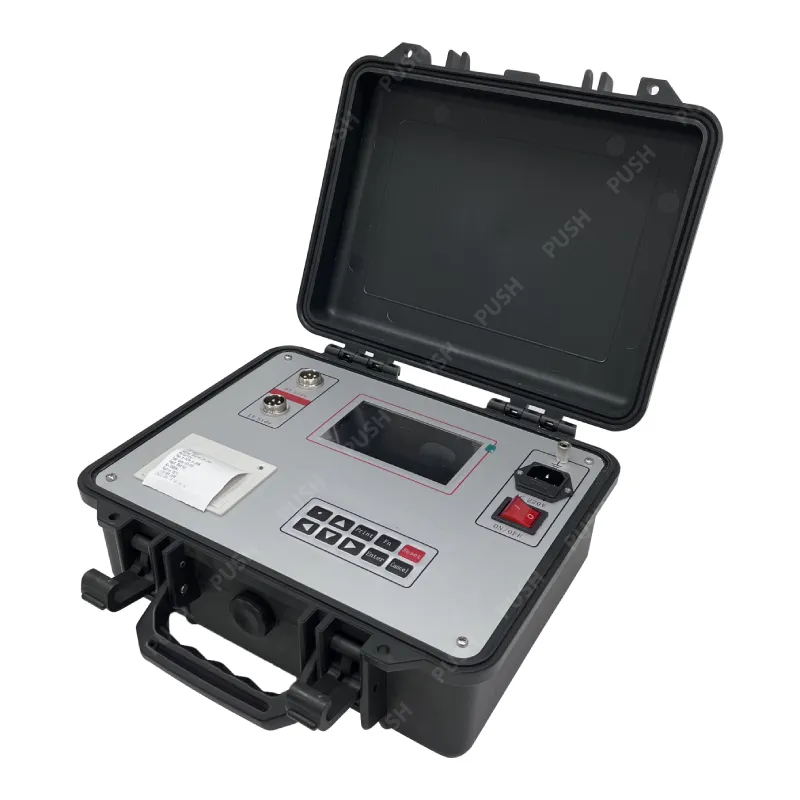 English
English


Understanding Tan Delta in Transformer Oil for Improved Performance and Reliability
Understanding the Importance of Tan Delta in Transformer Oil Testing
Transformers are critical components in electrical engineering, playing a pivotal role in the transmission and distribution of electrical energy. As vital as they are, their efficiency and reliability can be significantly affected by the insulating oil used within them. One of the critical parameters in assessing the condition of transformer oil is the tan delta (also known as the dissipation factor). This article delves into the significance of tan delta in transformer oil testing, its implications for transformer performance, and methods of testing.
What is Tan Delta?
Tan delta is a measure of the dielectric losses in insulating materials, specifically how much energy is lost as heat when an alternating current (AC) passes through the insulating medium. It is defined as the ratio of the resistive (loss) current to the capacitive (reactive) current at a given frequency. A higher tan delta value indicates greater energy losses and can signal potential problems within the insulation system of the transformer.
Significance of Tan Delta Testing
1. Assessing Insulation Condition The primary purpose of measuring tan delta in transformer oil is to assess the condition of the insulation system. Over time, transformer oil can degrade due to heat, moisture, and contamination, leading to increased dielectric losses. Regular monitoring of tan delta helps in identifying these issues before they escalate into serious failures.
2. Predictive Maintenance By establishing baseline tan delta values during routine testing, operators can compare current measurements against these baselines over time. An increasing trend in tan delta values may indicate a decline in insulation quality, allowing for proactive maintenance decisions. This predictive approach can help avoid unexpected transformer failures, thereby reducing downtime and maintenance costs.
3. Regulatory Compliance Many industries and regulatory bodies have established guidelines and standards for the acceptable levels of tan delta in transformer oil. Regular testing ensures compliance with these standards, which helps in maintaining operational integrity and safety.
transformer oil tan delta

4. Water Content Monitoring Tan delta is closely related to the water content in transformer oil. As water levels increase, the dielectric properties of the oil are adversely affected, leading to higher tan delta readings. Thus, monitoring tan delta can also serve as an indirect measurement of moisture content, which is crucial since moisture is one of the leading causes of insulation failure.
Methods of Tan Delta Testing
Tan delta testing can be performed using various methods, most notably the following
1. Capacitance Bridge Method This is a widely used laboratory technique where the oil sample is subjected to a high voltage AC supply, and the resulting current readings are measured. The tan delta is calculated based on the relationship between the capacitive and resistive components.
2. Automated Testing Devices With advancements in technology, automated devices are now available that can perform tan delta measurements quickly and accurately. These devices can save time and reduce human error in the testing process.
3. Field Testing Kits Portable tan delta testing kits enable operators to conduct on-site measurements without the need for removing large volumes of oil from the transformer. This practicality allows for easier scheduling of regular inspections and prompt identification of insulation issues.
Conclusion
In conclusion, tan delta testing for transformer oil is a vital diagnostic tool that helps ensure the longevity and reliability of transformers. By monitoring the tan delta values, operators can gain insights into the condition of the insulation system, anticipate potential failures, and manage maintenance more effectively. As the power industry continues to evolve, the critical role of tan delta in transformer oil testing will remain essential in safeguarding the operational integrity of these indispensable electrical devices. Regular testing not only aids in compliance with industry standards but also fosters a culture of proactive maintenance, ultimately enhancing the efficiency and reliability of electrical power systems.
-
Differences between open cup flash point tester and closed cup flash point testerNewsOct.31,2024
-
The Reliable Load Tap ChangerNewsOct.23,2024
-
The Essential Guide to Hipot TestersNewsOct.23,2024
-
The Digital Insulation TesterNewsOct.23,2024
-
The Best Earth Loop Impedance Tester for SaleNewsOct.23,2024
-
Tan Delta Tester--The Essential Tool for Electrical Insulation TestingNewsOct.23,2024





